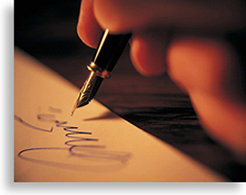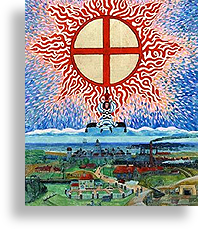|
|
|
|
|
 |
 |
 |
 |
 |
 |
 |
 |
 |
 |
 |
 |
 |
 |
|
On the Relation
|
|
|
of
|
|
|
Analytical Psychology to Poetry:
|
|
|
a Study of Jung’s Essay on Poetry, Literature,
|
|
|
and the Psyche
|
|
|
|
given by
|
|
|
|
Kyle Lee Williams MA, LMHCA
|
|
|
www.kyleleewilliams.com
|
|
|
|
Three Mondays 7pm-9pm (April 5, 12, 19) Fee: 3 classes for $60, $25 students.
|
|
|
Individual classes available at $20 per class, but entire series recommended.
|
|
|
|
Register Here: www.brownpapertickets.com/event/100293
|
|
|
|
Location: To Be Determined. Possibly Johnson Hall U. of Washington
|
|
|
 |
 |
|
Carl Jung was the first to use art and art making as a therapeutic tool to help others connect to their own deepest wisdom.
|
 |
 |
 |
|
As the author of over twenty-two volumes on analytical psychology, writer of deeply personal, visionary poetry, accomplished painter, calligrapher, sculptor, architect and builder of his own retreat in Bollingen, Jung was constantly engaged in the creative process.
|
|
|
About the Essay
|
|
|
|
 |
 |
|
Through all of these arts and crafts he devoted himself to the discovery and expression of the psyche, pioneering a path of creative self-discovery for all of us.
Great art serves a psychological purpose for both its creator and for the culture itself: Art’s function to compensate consciousness. It is a collective dream.
|
|
 |
Given as a lecture in 1922 to the Society for German Language and Literature, Jung sharply contrasts his own approach to art with the "corrosive reduction" of a Freudian approach.
|
 |
 |
|
Jung discusses and defines in this essay the following key concepts from Analytical psychology:
|
 |
 |
|
- archetype
- collective unconscious
- personal unconscious
|
|
 |
 |
|
- complex
- symbol
- participation mystique
|
|
 |
Jung points out that "a work of art is not a disease," and gives a layman-like explanation of the operation of complexes in the creative process. Jung speaks of the artist’s “divine frenzy” and its relationship to authentic religious experience, and on the psychological dangers inherent in the creative life, made so apparent in the tragedies of so many artists and highly creative people.
|
 |
 |
 |
 |
|
This essay offers a rare presentation of many of the key terms of Analytical Psychology a concise, layman like form. It is therefore a great place to begin the study of Jung’s thought.
|
|
|
This is not a course in reading or writing poetry. Like Jung’s essay, this class will explore many arts in addition to poetry.
|
|
|
|
By studying both the poetry and life of Herman Hesse, who was in analysis with Jung at the time Jung wrote this essay, we will discover an extraordinary example of the living connection between poetry, visual art, and the power of the creative psyche.
|
|
|
Learning Objectives
|
|
 |
- Explore and clarify concepts in analytical psychology.
- Understand the relationship of the archetype to a work of art.
- Examine the psychological function of art in culture.
- Discover the psychic elements that inform artistic expression (in poetry and the visual arts).
- Explore modes of creation: from the euphoric to the daimonic.
- Delineate analytical psychology vs. psychoanalytic approaches to art.
|
|
Students will get exposure to the process of reading a text using the process of amplification, a crucial technique in analytical psychology.
|
 |
 |
 |
 |
|
This class will cover a lot of material in the the short space of three nights. To gain maximum benefit, attendees should begin to read the essay prior to the first class. Reading questions will be handed out to registrants to help guide their reading. The reading questions will assist in facilitating our discussion.
|
|
|
Who Should Attend
|
|
|
|
Art-makers and facilitators of art-making. Anyone interested in their own development, in the deeper meaning of art and culture, or the psychology of art. Attendees will have an opportunity expand their understanding of their own creative process, gain perspective on the deeper meaning of creativity and better understand how to support and facilitate art-making and the creative process in others.
|
|
|
These classes are open to any individual interested in their own personal development, or who is attempting to understand a creative urge of their own arising from within. It is a course in discovering the creative within the individual and how this serves the culture at large. Students may be surprised to find that the map of inner life Jung provides in this article gives them courage and tools to explore the mystery of artistic creation within themselves.
|
|


